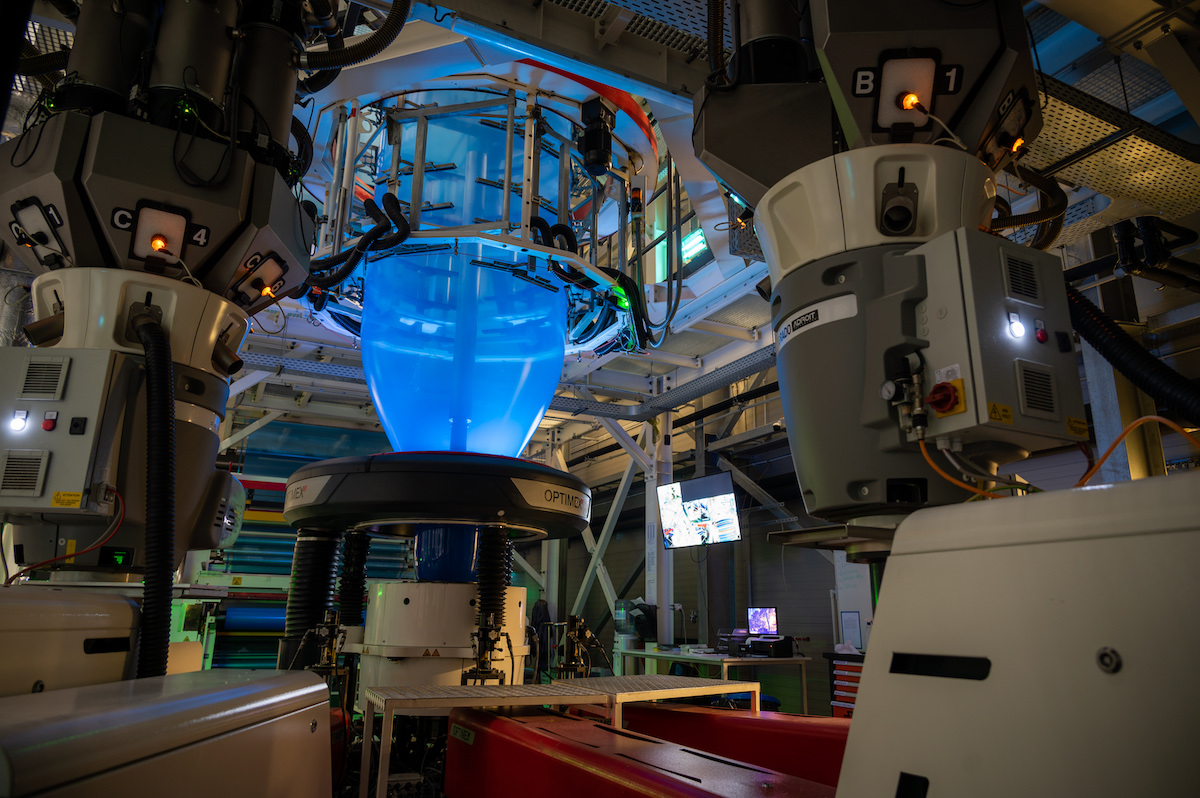



The use of film and flexible sheet packaging has increased in almost all industries over the past few decades.
Because of their versatility, they have become the first choice for businesses and consumers.
Various types of flexible packaging films are used in different ways to create unique packaging for different products, including pharmaceutical and medical products, food and beverages, oils and lubricants, and much more.
There are many variations and features to consider when designing packaging, as you have to ensure your products are presented and protected in the best possible way.
Different goods require different packaging solutions. Various materials can be used based on their properties, i.e., strength, durability, clarity, portability, etc.
Send Inquiry
| Category | Films |
| Material | LDPE, HDPE, MDPE |
| Types | Sleeve and/or overlaps, Half-sleeve, Tape |
| Width | from 60 mm to 2100 mm (LDPE), from 190 mm to 2100 mm (MDPE), from 220 mm to 970 mm (HDPE) |
| Thickness | from 13 μm to 200 μm (LDPE), from 13 μm to 200* μm (MDPE, HDPE) |
| Color | In accordance with customer requirements |
| Flexographic printing of up to 8 colors according to pantone | |
| Properties | The strength of 15 μm LDPE is inferior to that of HDPE with the same thickness. LDPE is a more stretchable film compared to HDPE; it is more flexible and resistant to tearing. Both types of film have a high resistance to low temperatures, with HDPE performing better than LDPE in that regard. |
| Additives | Can be manufactured with certain additives: - UV additive to protect the film from the effects of sunlight - antistatic additive to protect against discharges - slip-enhancing additive for easier packaging or opening - slip-reducing additive to allow easier stacking of products on pallets - additive to facilitate heat shrink (not applicable for HDPE and MDPE) - optional perforation - optional ionization: single-sided, double-sided or segmented - in case of a film intended for printing and lamination |
| Usage | Wide range of applications in packaging, food, medical and hygiene industrie |
Do not hesitate to contact us for more information about the different films and to find out which product is the right one for your project!
Send InquiryFlexible films custom fit the contours of the product that is being packaged. This solution allows you to design your packaging to meet your unique specifications and market goals, regardless of the shape, size, or visual requirements.
Flexible films can also add a form of tamper evidence to packaged goods.
The ability to customize the packaging films also extends to visual characteristics, including clarity, gloss, and printability. This allows the product to showcase your brand in an eye-catching way.
Shrink film is a perfect choice for packaging meat or frozen foods, as it is waterproof. High-quality graphics in a variety of colors and designs can also be applied to the film.
Versatility is an extremely important advantage here. With the variety of options to choose from, you can create a package that stands upright, hangs from a stand, or sits on a shelf. The packaging adapts to the product, not the other way around.
Different goods have different requirements. The product-specific priorities include, but are not limited to: shelf life, tear resistance, safe distribution, storage, freshness, food safety, as well as protection from environmental factors, including temperature, light, moisture, and gas. Flexible films help extend the shelf life of perishable products and can hide the leakage of aromas from the package contents.
Stand-up pouches are made from flexible film and have become a popular option for food products – especially those with high liquid contents. These bags are both durable and versatile, protecting the product from environmental and physical hazards encountered during transportation and storage.
Wasting material is a thing of the past! Today, a film can be cut to the specific size of your product, meaning you don’t have to use more material than absolutely necessary. The film conforms to your product and provides a better product-to-package ratio, which lowers your manufacturing costs. Using packaging film helps simplify your inventory management by eliminating the cost of labeling or even sealing.
The use of high-quality films often removes the need for packaging elements such as corrugated trays. In addition, the cost of using packaging films is significantly lower than that of plastic or glass containers.
You may be able to further reduce packaging costs by choosing a smaller width of the film. If you produce significant amounts of film waste, it might be worth trying to lower it by testing a smaller width.
Packaging made from a film can be designed to include zippers, spouts, and closures to ensure resealing after opening. Consumers are increasingly looking for options that offer more convenience – with these variations, you should be able to satisfy your customers.
Sustainability is becoming increasingly important – it is vital to use packaging materials that meet sustainability standards. One of the biggest advantages of polyethylene films is that they are recyclable. While there are efforts to develop a compostable, biodegradable substitute to plastics that will last just as long, to date, there is no real alternative.
Packaging films require less energy to manufacture and produce lower levels of greenhouse gases when transported to the customer. The recyclability, sustainability and waste reduction associated with PE films can make products more attractive to consumers. Many people prefer to buy from brands and companies that take steps to reduce their environmental impact and footprint.
Finally, the trend toward waste-to-energy (WTE) is becoming an increasingly viable solution to end-of-life PE packaging materials. Technological advances have overcome the problems associated with harmful combustion emissions, making it easier for companies to convert waste into electricity, synthetic gas, fuels, and recycled materials. This way, air emissions, landfill pollution, and power consumption can be reduced.